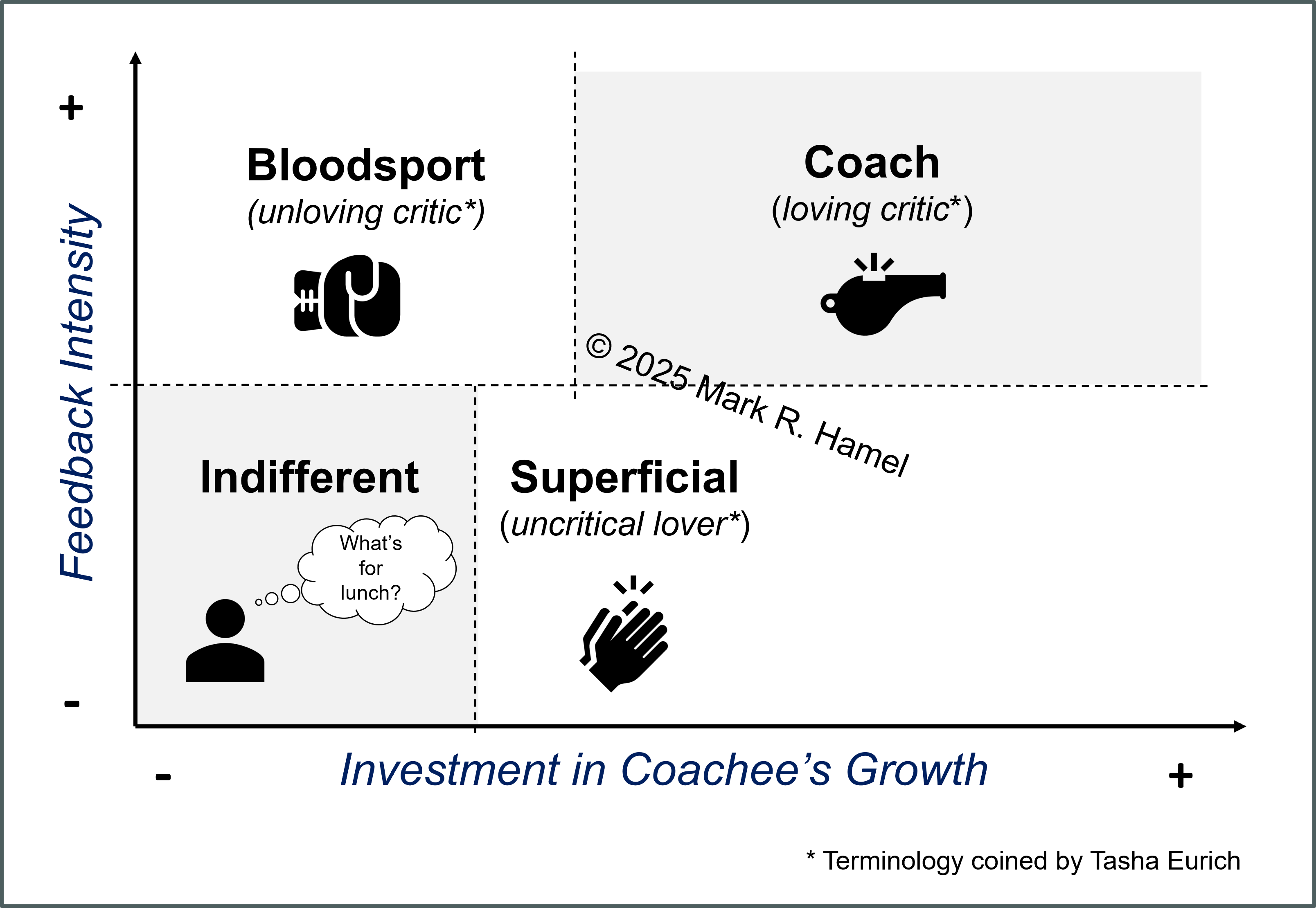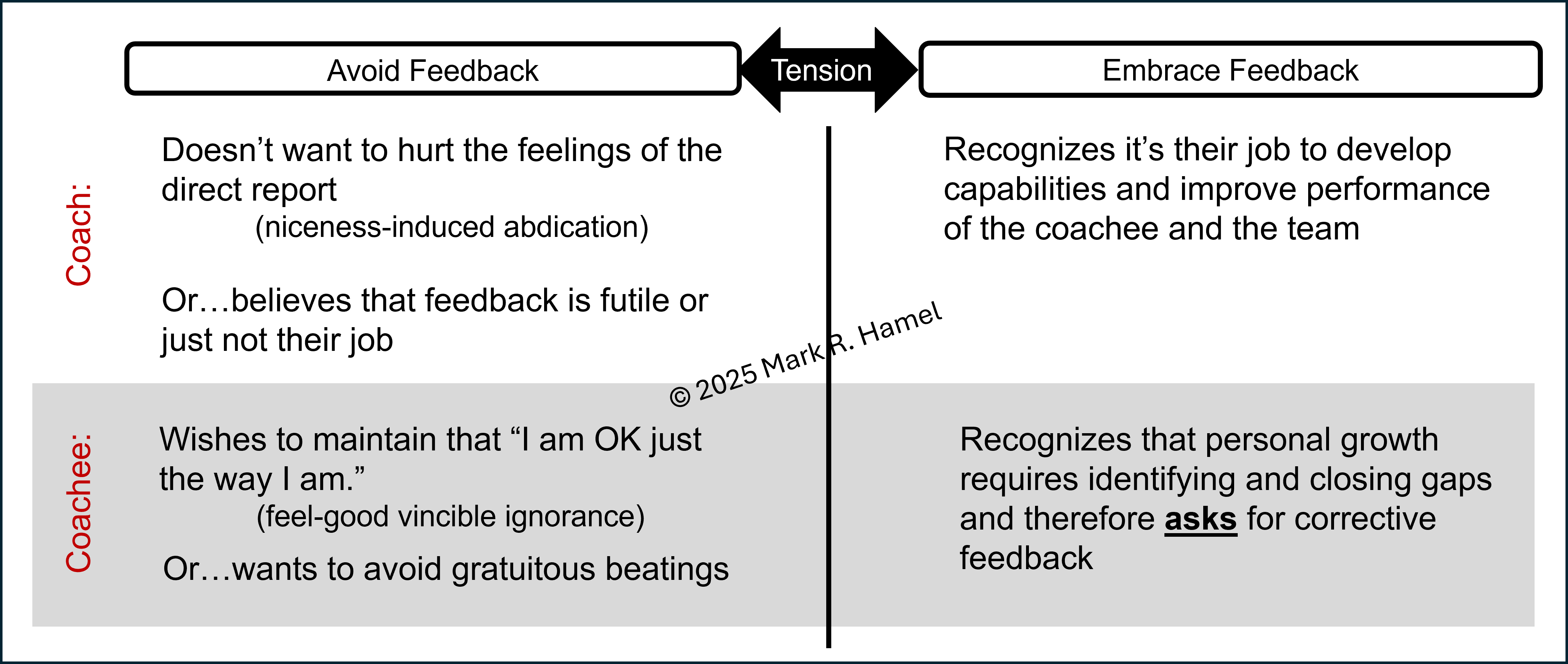
Effective coaching requires feedback, both positive (aka reinforcing) and corrective. Think of it as a check, or “C,” in our individual and team-based application of PDCA. We can’t sustainably improve without it.
In other words, open-looped systems don’t work well for processes or people. If we don’t discern and understand the gap, we won’t be compelled to change. The change is the “A,” or adjust, in PDCA.
Now, let’s focus our attention on corrective feedback.
Often the best corrective feedback is delivered, really elicited, by the coach asking the coachee open-ended questions. This prompts coachee self-reflection, self-discovery, and self-assigned adjustment. It is supplemented by the coach’s direct observations, insights, and facilitation. Pointers on coaching strategies and techniques are a subject for another time.
We should agree that good corrective feedback is, at a minimum, timely, limited in scope (i.e., not addressing multiple issues/opportunities), fact-based, respectful, and actionable.
Four Feedback Zones
Feedback effectiveness, other than delivery method, is largely based upon where the coach is in terms of feedback intensity and their investment in the coachee’s growth. There are four feedback zones, see the first figure.
Assuming that corrective feedback is intended to develop the coachee’s self-awareness, knowledge, and mindsets, and help them appropriately adjust their behavior, only one zone is of value. The others, namely the “indifferent,” “superficial,” and “bloodsport” zones yield wasted time/opportunity and annoyance, and often generate frustration and demoralization.
Question: Why would any leader accidentally or purposefully live in those three zones?
Answer: They don’t want to coach, don’t know how to coach, are afraid to coach, and/or might mistakenly think what they are doing is “coaching.” (These are important subjects…also for another time.)
Two Poles
Feedback requires a coach and a coachee, in mutual engagement. These are not strictly one fixed active and one fixed passive role.
A healthy coaching relationship is enabled when the coach seeks to share feedback at the right time and in the right way, and the coachee readily pulls it and engages. Together they improve awareness, get clarity, exchange ideas, and ultimately the coachee owns the gap and commits to a plan to close the gap. Often the coach will provide support during the execution of the plan and will ensure that the coachee follows through.
But feedback is a funny thing.
In a January 2014, Harvard Business Review article, Jack Zenger and Joseph Folkman shared the following preliminary research results.
- About half the people prefer giving positive feedback and half do not.
- People equally prefer receiving positive feedback as they dislike delivering negative feedback.
- 57% of people prefer receiving corrective feedback and 43% prefer receiving positive feedback.
- “92% of respondents agreed with the assertion, ‘Negative (redirecting) feedback, if delivered appropriately, is effective at improving performance.’”
What does this mean? In general, no one wants to deliver corrective feedback, but nearly everyone wants to hear it.
There is a tension between the desire to avoid giving/receiving feedback and the desire to embrace giving/receiving it. How do we move from the left to the right side of the next figure?

In simple terms, leaders must lead the way. But how?
Here are a few fundamental steps.
- Get into the right (loving critic) zone and ditch the others. Leaders must recognize that their job is one of coaching and development. This requires them to shift their mindset from a fixed to a growth orientation (i.e., People have the potential to develop new capabilities. Coaching is not futile). See here for my article on this topic.
- Shake off the niceness-induced abdication of coaching responsibilities. The vast majority of coachees want corrective feedback. In the end, we are NOT “nice,” if we neglect to deliver corrective feedback (in the right way) and help them to be more effective.
- Learn and continually practice the “right way” to coach. Coach others to do the same. Include demonstrated coaching competency requirements within each leader’s performance agreement.
As many say, “feedback is a gift.” Especially the corrective kind.
